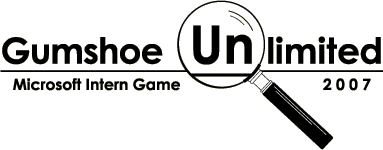Mug Shots Solution
How It Works
This was a run-of-the-mill encoding puzzle, with several layers of encoding, themed to give it a gumshoe flavor. The first step is to notice that the two digits before the commas in each of the numbers fell within the range of 01-26, with the exception of a single instance of 00. Using these as straight indexes into the alphabet and treating the 00 as a separator, this yielded the message THEFACESARETERNARYLEFTCENTERRIGHT / SI. The portion of this message before the separator is a set of instructions on what to do next, while the two letters afterward come into play later.
Following those instructions and noticing that each row of mug shots has three pictures in it leads to sets of three ternary digits, which conveniently cover the range of 0 to 26. Converting these to numbers and then to letters (again, indexing into the alphabet), gives a second message, ODDISDASH / DE.
Dashes are most frequently seen, of course, in Morse code. Treating the numbers as a full five-digit number, the odd numbers as dashes, the even numbers as dots, using the vertical lines as separators between characters, and the double vertical lines as a full separator, this provided the third message, USEBEARDSAS. / SH. Note that there was one trick with this step – while a single dot is an "e" in Morse code, its usage in this case was as a literal dot.
The dot is a hint to the last encoding – Braille. The problem with trying to apply Braille, however, was that the sheets didn’t have sets of 2x3 grids. Unless, that is, the sheets were turned into landscape orientation. The shapes on the tops and bottoms of the sheets made it possible to align the three sheets in landscape from left to right. Reading these as Braille, with the bearded photos as dots, gave a final message – END / OT.
Solution
The final step was to put together the four pairs of leftover letters from each step, yielding the final answer, Side Shot.
Design Notes
The seed for this puzzle was the theme, and the desire to have a puzzle based on mug shots. Brainstorming on what mug shots looked like, the density of possible information in each mug shot (the various characteristics of the person pictured, as well as the data on the board held in front of them) made it a natural fit for a dense encoding puzzle, which used as much of the data present as possible.
The original draft of this puzzle had an additional cute twist to it – with the help of an equals sign on the page, the Braille message spelled out 1=A instead of END, which caused the four encodings to loop. The theory behind this was that teams could enter the loop at any point based on which message they found first, and would never get stuck having missed a previous encoding because they would eventually loop around.
In playtesting, however, this turned out to be more trouble than it was worth. Across many playtests, we never encountered a single test team that ever found any but the first encoding first, and every team also got incredibly confused when they got to the last step, because there was no clear indication that the puzzle was finished. Because of this, the decision was made to make the series of encodings serial and assume that everyone would begin from the first step.
The other thing that came out of the playtests was that it was important for the answer to not be guessable with six letters out of the eight – otherwise, the last and most challenging step would get skipped, which made the puzzle significantly easier than desired. The solution we came up with for this was to make the answer two words which looked like one, which rendered the solution unguessable, yet still in theme.
The actual production of this puzzle turned out to be more trouble than expected. It turns out that asking random people in the halls to pose for a mug shot engenders enough fear and skepticism that using people that we didn’t know personally didn’t pan out. Furthermore, beards that look perfectly clear in person aren’t nearly as easy to discern when printed in black and white.
GC Notes
We heard very little about this puzzle, so there isn’t much to add. Fortunately, as we had predicted through playtesting, there weren’t any issues with teams entering the decoding chain mid-stream.
